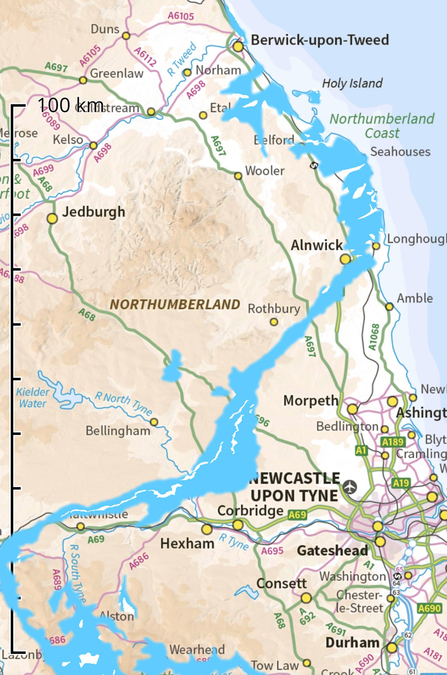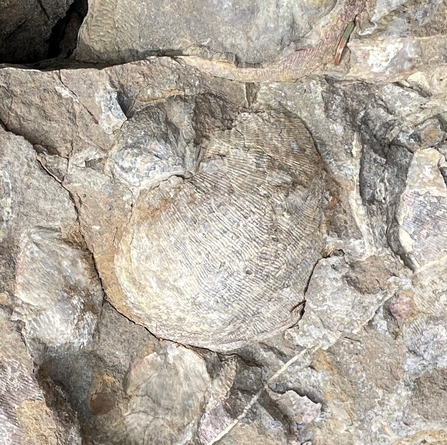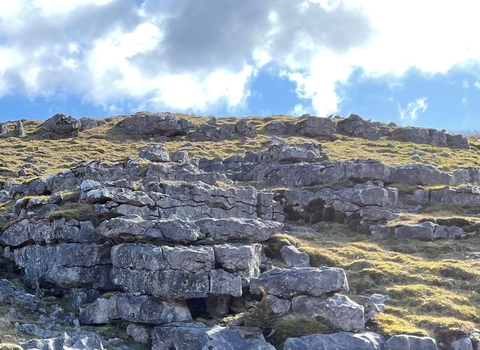What is limestone?
It’s a rock composed of the minerals calcite and aragonite, which are different crystal varieties of calcium carbonate.
How do I recognize it?
Like a lot of rocks it comes in various shades of grey, but it often has fossils in it (you can usually see them better with a magnifying glass). When you look at a cliff of limestone it has wavy horizontal lines and cracks separating the layers of rock (unlike sandstone which has straight lines and Whin Sill which has vertical cracks). Because limestone is soluble it also dissolves in weak acid.

Where do I find it?
Layers of limestone occur across Northumberland in big arc from northeast to southwest. One of the most prominent limestones is called the Great Limestone and you can see it at East Crindledykes Nature Reserve.

Fossil sea shells
How was it made?
By the minerals calcite and aragonite precipitating out of sea water, mostly through biological processes – many billions of microscopic animals, but also sea creatures, like shells, too. Our Northumberland limestones were deposited about 320 million years ago in the Carboniferous Period when our environment was a warm shallow sub-tropical sea!
What does a limestone landscape look like?
Because it dissolves limestone often produces special landscapes, with potholes (sink or swallow holes), caves and “pavements”; there is usually no water at the surface because it has percolated down through cracks and fissures. Limestone landscapes all over the world have a name – “karst”.
Which plants like limestone?
Many of the word’s floristic hotspots are on limestone (in the North East Upper Teesdale is an example). In Northumberland many less common species are found on limestone, or on thin soils affected by the rock. Among these are hairy rock-cress, hoary plantain, small scabious and autumn gentian. Limestone pavement is a very special habitat for plants, but we only have a tiny bit, beside Broomlee Lough.
What use is it?
We couldn’t live without limestone! As well as being used as a building stone (including for special places like Durham Cathedral), it is used for making cement and mortar and for producing steel. One third of global oil reservoirs are found in limestone. We use it for treating acid soils, and for many industrial chemical processes. Did you know that it is part of toothpaste and paint and it’s even added to flour and bread!

